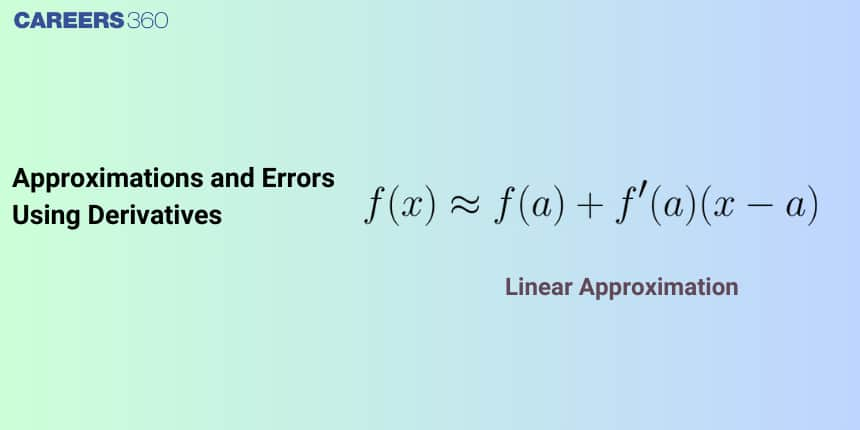Approximations and Errors using Derivatives: Definition and Examples
Approximation is an important concept in calculus. It is used to estimate the values of functions at a given point. An approximate model is used to make the calculations easier. The approximations can also be used if inadequate information prevents the use of exact demonstrations. These concepts of approximation have been broadly applied in branches of mathematics, physics, engineering, economics, and biology.
JEE Main 2025: Sample Papers | Mock Tests | PYQs | Study Plan 100 Days
JEE Main 2025: Maths Formulas | Study Materials
JEE Main 2025: Syllabus | Preparation Guide | High Scoring Topics
- Approximation
- Approximations and Errors Using Derivatives
- ERROR

In this article, we will cover the concept of the approximation. This topic falls under the broader category of Calculus, which is a crucial chapter in Class 11 Mathematics. This is very important not only for board exams but also for competitive exams, which even include the Joint Entrance Examination Main and other entrance exams: SRM Joint Engineering Entrance, BITSAT, WBJEE, and BCECE. A total of one question has been asked on this topic in JEE Main from 2013 to 2023 in 2013.
Approximation
Where
It gives the approximate value of any
ex
we will use differentials to approximate values of certain quantities.
Let
(i) The differential of x , denoted by dx , is defined by
(ii) The differential of
Approximations and Errors Using Derivatives
Let the function,
As we have derived derivatives earlier,

As in the figure, point
ERROR
Absolute Error
Relative Error
Percentage Error
Recommended Video Based on Condition of Approximation
Solved Examples Based on Condition of Approximation:
Example 1: Let
1)
2)
3)
4)
Solution:
Given
Consider
So,
put
we get
Hence
Hence, the answer is option 4.
Example 2: Approximate value of
1) 20.0025
2) 20.01
3) 20.001
4) 20.0035
Solution
Let
With a small change
Now,
For a given question, let
Also
Hence, the answer is the option 1.
Example 3: Approximate value of
1) 9.96
2) 9.99
3) 10
4) 9.997
Solution
Let
With a small change
Now,
For the given question,
Also
Now using (i)
Hence, the answer is the option 4.
Frequently Asked Questions (FAQs)
Approximation involves estimating the values of a function
An approximate model can also be used to make the calculations easier.
Also Read
14 Feb'25 09:37 PM
14 Feb'25 09:18 PM
14 Feb'25 09:15 PM
14 Feb'25 09:11 PM
14 Feb'25 09:05 PM
14 Feb'25 09:02 PM
14 Feb'25 09:00 PM
14 Feb'25 08:57 PM
14 Feb'25 08:54 PM
14 Feb'25 08:23 PM
